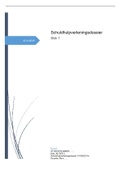Exam (elaborations)
Test Bank For Ebersole and Hess’ Gerontological Nursing and Healthy Aging 6th Edition by Theris A. Touhy, and Kathleen F Jet All Chapters 1-28 LATEST
Test Bank For Ebersole and Hess’ Gerontological Nursing and Healthy Aging 6th Edition by Theris A. Touhy, and Kathleen F Jet All Chapters 1-28 LATEST
[Show more]




